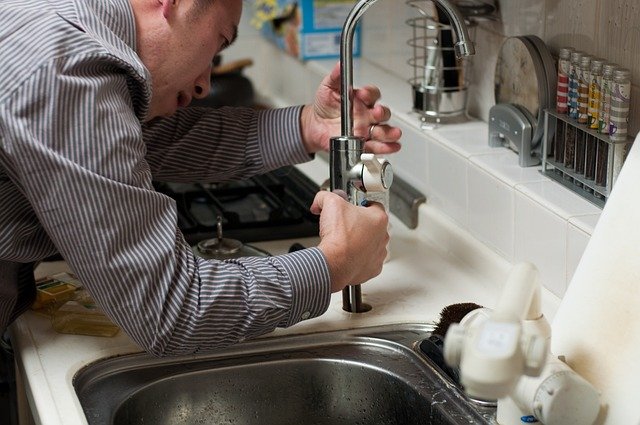Water-efficient fixture choices for residential wash spaces
Choosing water-efficient fixtures for residential wash spaces reduces water use and supports long-term sustainability. This article outlines fixture types, sensor and automation features, and practical retrofit strategies to help homeowners balance functionality, accessibility, and durability.

Residential wash spaces can conserve significant water without sacrificing comfort or accessibility. Selecting the right fixtures and layout reduces household water consumption, lowers utility bills, and supports sustainability goals. This article explains how plumbing and fixture selection, touchless technology, ventilation, lighting, tiling and waterproofing, accessibility, durability, and retrofit strategies combine to create efficient, resilient wash spaces.
How do plumbing and fixtures affect water use?
Plumbing layout and fixture selection are central to water efficiency. Low-flow faucets and showerheads, pressure-balanced valves, and dual-flush or low-volume toilets reduce consumption at the source. Proper pipe sizing and minimizing long runs cut wasted water during warm-up. When specifying fixtures, check flow rates (liters per minute or gallons per minute) and compatibility with existing plumbing. Regular maintenance prevents leaks; even small drips add up. Integrating water-saving fixtures with competent plumbing work ensures the intended savings are realized and systems remain reliable over time.
What are touchless and automation options?
Touchless fixtures and basic automation help reduce unnecessary use and improve hygiene. Sensor-activated faucets and flush valves limit runtime to the required amount while sensor showers or preset timers can prevent prolonged flow. Automation also includes temperature presets and occupancy sensors that control lighting or ventilation tied to usage. While sensors can conserve water, choose reliable products calibrated for the household’s water pressure and flow characteristics. Incorporating automation thoughtfully prevents false activations and ensures durability, reducing the need for frequent service calls.
How does ventilation and lighting impact efficiency?
Ventilation and lighting influence comfort and the long-term condition of wash spaces, indirectly affecting water-related maintenance. Effective ventilation reduces humidity, protecting fixtures, tiling, and waterproofing from mold and degradation that can cause leaks. Energy-efficient LED lighting and occupancy sensors lower energy demand and can be integrated with automation systems. Selecting ventilation fans with appropriate airflow ratings for the room size and placing lighting controls thoughtfully helps maintain a functional, durable space while contributing to overall sustainability objectives.
What tiling and waterproofing choices help sustainability?
Tiling and waterproofing determine how long surfaces and fixtures remain problem-free. Durable, water-resistant tile, proper mortar, and correctly installed membranes reduce the chance of leaks and water damage behind finishes. Choosing materials with low maintenance needs and proven lifespans decreases replacement frequency, supporting sustainability. Ensure waterproofing details around fixtures, shower enclosures, and wet areas follow best practices to protect structural elements and plumbing. Well-executed waterproofing reduces repair-related water waste and extends the functional life of the wash space.
How to balance accessibility and durability?
Accessible fixtures—such as lever handles, adjustable-height showers, grab bars, and walk-in shower designs—can coexist with water-efficient choices. Durable materials and robust fixtures withstand frequent use and adaptations over time. Select finishes and mounting methods that meet accessibility needs without compromising water-saving performance. For instance, thermostatic mixers provide stable temperatures for users with mobility concerns while conserving water when paired with efficient showerheads. Prioritizing both accessibility and durability ensures wash spaces remain safe and economical over their lifecycle.
How can retrofit approaches improve conservation?
Retrofit strategies offer practical routes to improved conservation in existing homes. Replacing toilets with dual-flush models, swapping high-flow showerheads for certified low-flow alternatives, and installing aerating faucet inserts typically produce measurable savings with limited disruption. Upgrading valves and fixing leaks will often yield immediate benefits. Retrofits should consider compatibility with current plumbing and the need for any adjustments to ventilation or waterproofing. Documentation of existing conditions and consulting local services or experienced installers in your area helps align retrofit scope with expected conservation outcomes.
Conclusion
Water-efficient fixture choices for residential wash spaces combine technical selection, thoughtful design, and proper installation. Focusing on plumbing and fixtures, adopting touchless and automation features where appropriate, attending to ventilation and lighting, and using durable tiling and waterproofing supports sustainability and longevity. Balancing accessibility with resilient materials and pursuing targeted retrofit measures can deliver meaningful water savings while maintaining comfort and functionality.





